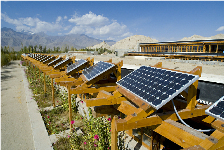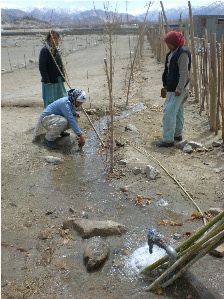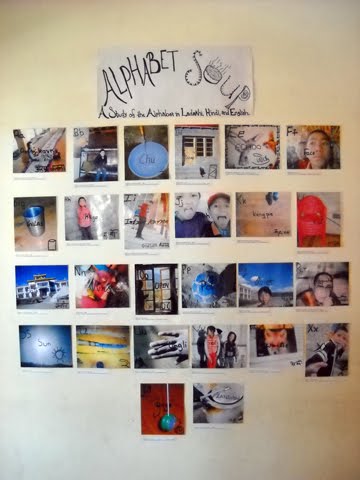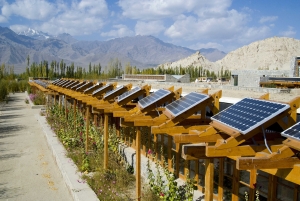
Job Opportunities
DWLS is making the transition from traditional to child-centred teaching methods and currently has 705 students on the roll.
Due to increased student numbers and expansion of the curriculum and services, for the new academic year Nov 2013 - September 2014 Druk White Lotus School - known to many as Rancho's School - invites applications for the following post/s (applications to be submitted by 31 October 2013):
- None at present
Only qualified and experienced applicants with an intimate knowledge of the Indian education system should apply. Further information about DWLS is available elsewhere on this website.
Applications and enquiries please to This email address is being protected from spambots. You need JavaScript enabled to view it.
Carbon Offset
When you travel by plane or by ground transportation powered by diesel or gasoline, you cause carbon dioxide (CO2) to be emitted into the atmosphere and you contribute to climate change. You can ‘offset’ this impact by investing an amount corresponding to the value of the carbon involved into a scheme elsewhere that reduces CO2 emissions. You can do this by investing in the independently-accredited Druk Padma Karpo solar energy scheme.
The mains electricity supply in Ladakh was highly unreliable and therefore the school was previously forced to use a diesel generator to produce power to run lights, computers and the office equipment. However, the generator was polluting a fragile environment and we therefore determined to become energy self-sufficient through the use of solar energy. Stage 1 was achieved in 2008 with the installation of photovoltaic panels and inverters. Spare panels and inverters have been purchased and in late 2012 an additional installation of panels and inverters was completed to increase capacity to meet the demands of the expanding school.
The solar scheme was independently audited and approved by TICOS, the Tourism Industry Carbon Offsetting Service, now called Beyond Carbon, and travellers may offset their carbon travel footprint by making a payment towards the school's solar energy system. You may like to use carbon offset costs prepared by ClimateCare www.climatecare.org and use their carbon offset calculator and then pay your carbon offset directly to the school via this website.
Such funds are restricted to financing solar energy equipment on the Shey campus, and to continue to keep the diesel generator switched off (other than in emergencies).
Energy

As the school expands and electricity demand increases, we will need to increase installed capacity of both photovoltaic panels and inverters.
Around half of the initial investment in solar energy was co-financed by carbon-offest funds and additional capacity has been installed funded by a travel industry carbon-offset scheme.
Waste
We separate bio-degradable waste, which goes into a composting bin in the greenhouse. We aim to boost these activities, work on further separation of waste materials and increase the percentage of recycled waste.

Students from BaSiC Initiative (USA) helped with recycling issues in summer 2009 and produced some comic books to help the kids understand and become motivated. Take a look - download the pdf
Water

Weather patterns seem to be shifting and glaciers are tending to recede. Therefore water supply could be at risk in some areas in the medium-term.
Our solar pumps raise water from a depth of about 30 metres into above-ground reservoirs at the top of the campus, from where water is distributed under gravity through separate potable and irrigation systems. We use grey (used) water for irrigation, including for willow saplings.
We monitor the situation closely on the Shey campus and water management is becoming more and more important. This reality is being integrated into the learning process.
Photoliteracy

Julayne Farmer from the USA is working with students to help them express themselves through photo-images. They have been working on a range of subjects including ‘Gandhi’, ‘The Best Bit of Me’ and ‘Peace, Hope, Love, Freedom, Happiness’.”
http://photoliteracy.blogspot.com/
